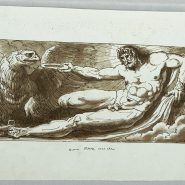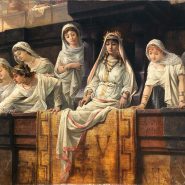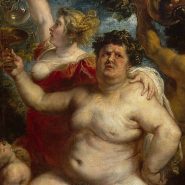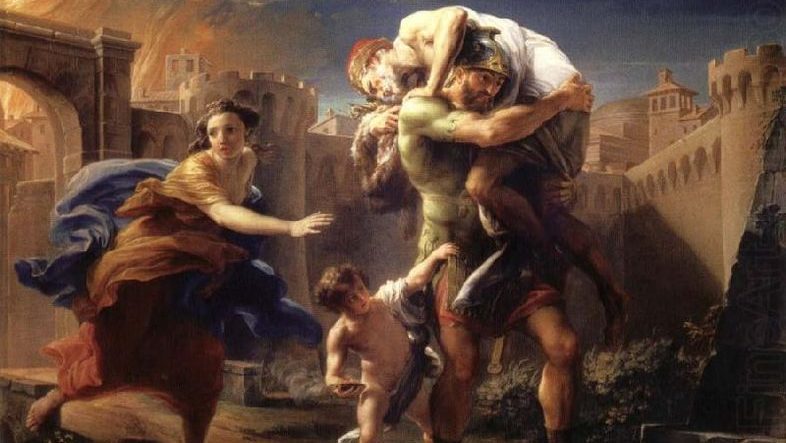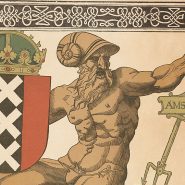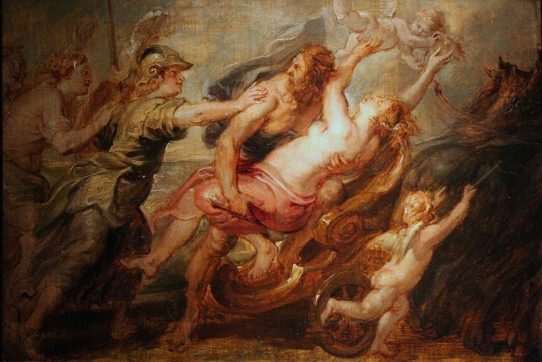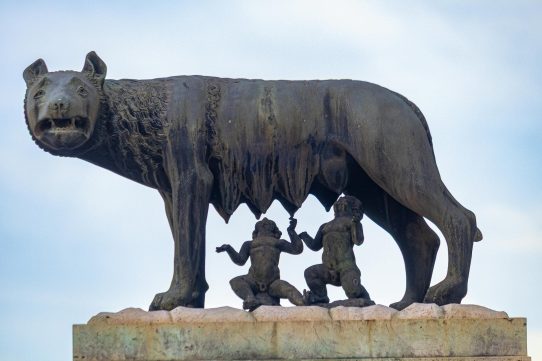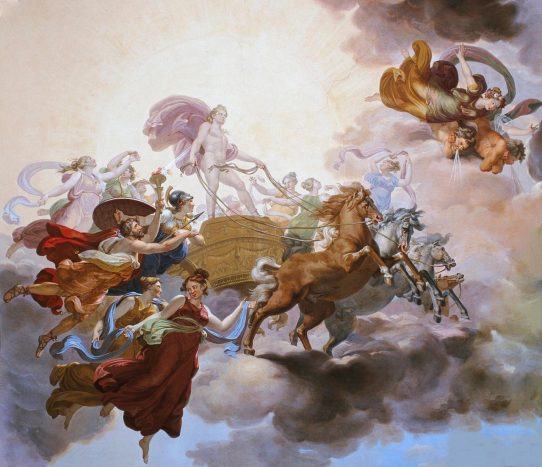Aeneas stands at the crossroads of myth and destiny — a bridge between the fallen city of Troy and the rising empire of Rome. Revered as both warrior and wanderer, his story weaves together themes of duty, sacrifice, and divine purpose. Through his trials, Aeneas became more than a survivor of war; he became the legendary founder of a people destined to rule the world.
The Birth of a Hero
Aeneas’s lineage alone set him apart. Born to the mortal Anchises and the goddess Venus (Aphrodite in Greek mythology), he embodied both human courage and divine favor. His early years were spent in Troy, where he became known for his piety and valor — a warrior devoted not only to arms but to the will of the gods.
During the Trojan War, Aeneas fought bravely alongside Hector and other defenders of the city. Though he was not among the most famous of the Greek epics’ heroes, his fate was crucial. When Troy fell to the Greeks through Odysseus’s cunning ruse of the wooden horse, Aeneas was spared destruction. Guided by his mother Venus and the gods, he escaped the burning city carrying his aged father Anchises on his back and leading his young son Ascanius by the hand — a tableau that became one of the most enduring images of Roman virtue.
The Journey from Troy
Aeneas’s escape was only the beginning of a far greater journey. His mission, as decreed by the gods, was to find a new homeland where the descendants of Troy would flourish. Accompanied by fellow refugees, he sailed across the Mediterranean, enduring shipwrecks, tempests, and trials that echoed those of Odysseus.
Their travels took them first to Thrace, then to Crete, and finally to Carthage — a North African city ruled by the powerful Queen Dido. Here, Aeneas’s destiny became entangled with love and tragedy. Venus, seeking to protect her son, caused Dido to fall in love with him. For a time, the two lived as lovers, and Aeneas found peace after years of wandering. Yet the gods reminded him of his mission. Jupiter sent Mercury to command him onward to Italy.
Torn between passion and duty, Aeneas chose the path of destiny. His departure broke Dido’s heart; she took her own life, cursing him and his descendants — a mythic origin for the later enmity between Carthage and Rome.
Arrival in Italy
After many hardships, Aeneas and his followers reached the shores of Italy. There he was welcomed by King Latinus, who saw in him the fulfillment of prophecy: that a foreigner would come to found a great empire. Latinus offered his daughter, Lavinia, in marriage, but the match provoked conflict with Turnus, the leader of the Rutulians, who was already betrothed to her.
The ensuing war tested Aeneas’s resolve as both soldier and leader. Despite heavy losses, he triumphed, aided by the gods and driven by the knowledge that his struggle was part of a divine plan. After defeating Turnus in single combat, Aeneas secured the peace that would allow his people — the Trojans and Latins — to unite. Their descendants, through his son Ascanius, would go on to found Alba Longa and eventually Rome itself.
The Virtue of Pietas
Central to Aeneas’s character is pietas — the Roman ideal of devotion to the gods, family, and country. Unlike the impulsive or glory-seeking heroes of Greek myth, Aeneas represents discipline and duty. He does not seek fame for its own sake; his greatness lies in obedience to fate.
This moral focus distinguished the Roman worldview from the Greek. For the Romans, Aeneas was a model citizen — one who endured suffering, made personal sacrifices, and placed destiny above desire. His story became a mythic justification for Rome’s imperial mission: if Aeneas endured divine trials to found their people, then the Roman Empire itself was sanctioned by the gods.
The Aeneid and Roman Identity
Aeneas’s legend was immortalized by the poet Virgil in the Aeneid, written in the first century BCE during the reign of Augustus. Commissioned as a national epic, the poem linked Rome’s origins to the grandeur of Homer’s Troy and legitimized Augustus’s rule as the fulfillment of destiny.
Virgil’s Aeneas is not merely a hero but a symbol of Rome’s collective spirit. His journey mirrors the empire’s own — from struggle and loss to triumph and order. The Aeneid became required reading for Roman citizens and scholars for centuries, shaping Western ideas of heroism, duty, and divine purpose.
Legacy and Cultural Influence
Aeneas’s influence reached far beyond antiquity. In art, he was depicted carrying Anchises, a visual shorthand for filial piety and endurance. Renaissance painters and sculptors revived his image as a paragon of virtue and civilization. In literature, his story inspired countless adaptations, from medieval legends that connected him to the founding of Britain to modern retellings of exile and identity.
Even today, Aeneas stands as a symbol of perseverance in the face of destiny. His myth speaks to every age that seeks meaning in endurance — the belief that hardship may serve a higher purpose, and that from ruin can rise a new world.
Conclusion
Aeneas’s tale is one of transformation: from the ashes of Troy to the dawn of Rome. Guided by divine will and fortified by human virtue, he forged a path that linked two civilizations and gave the Roman people a sacred origin. Through him, the ideals of courage, duty, and endurance became cornerstones of Roman identity — virtues that echo through history long after the waves of the Mediterranean have quieted.
